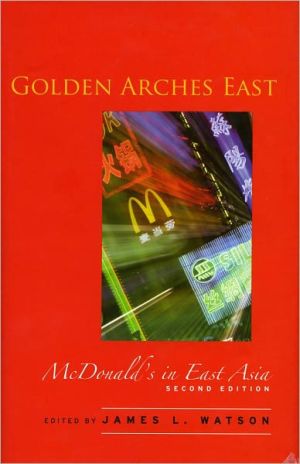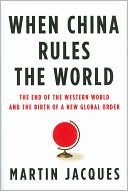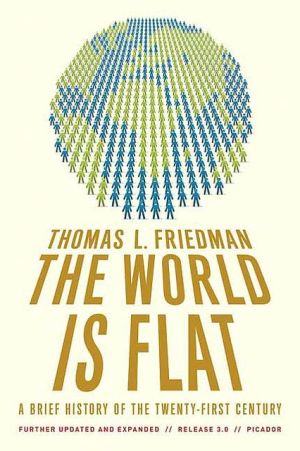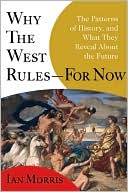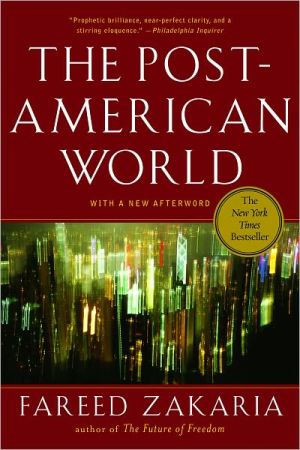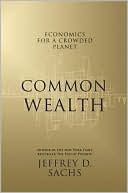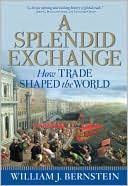Golden Arches East: McDonald's in East Asia
“McDonald's Restaurants are to be found world-wide and books have been written on their business success and approach but GOLDEN ARCHES EAST: MCDONALD'S IN EAST ASIA is something different, providing college-level readers with a blend of cultural insights and business savvy as it traces McDonald's role in five Asian countries. Chapters provide the author's first-person insights as he journeys to five Asian countries and asks questions on McDonald’s management, promotion strategies, and impact...
Search in google:
For the second edition of this widely read—and widely acclaimed—book, James L. Watson has added a new chapter entitled “Update: McDonald’s as a Political Target.” He covers recent attacks on the Golden Arches as a symbol of American imperialism, and the obesity controversy currently raging in the U.S. food industry. The new chapter also brings the story of East Asian franchise into the twenty-first century. Library Journal From a historical perspective, McDonald's Ray Kroc may be viewed as the latest in a line of foreign rulers who conquered Asia. From Japan to South Korea to Taiwan, Hong Kong, and, most recently, China, the ubiquitous Golden Arches proclaim the victory of American hamburger culture. But is McDonald's the vanguard of a process of globalization? The five anthropological case studies gathered here by editor Watson in this absorbing, accessible study suggest a more complicated answer than yes or no. They show that, partly because of its own localization strategy and partly because of the consumers it targets, McDonald's quickly assimilates to the culture of the countries where it operates even as it contributes to modernizing changes in those diverse Asian settings. In particular, McDonald's is no longer an exotic import but part of the local milieu. Here is that rare academic study that belongs in every library.Steven I. Levine, Boulder Run Research, Hillsborough, N.C.
McDonald's in Beijing: The Localization of Americana \ Yunxiang Yan\ On April 23, 1992, the largest McDonald's restaurant in the world opened in Beijing. With 700 seats and 29 cash registers, the Beijing McDonald's served 40,000 customers on its first day of business. Built on the southern end of Wangfujing Street near Tiananmen Square--the center of all public politics in the People's Republic of China--this restaurant had become an important landmark in Beijing by the summer of 1994, and the image of the Golden Arches appeared frequently on national television programs. It also became an attraction for domestic tourists, as a place where ordinary people could literally taste a bit of American culture. New McDonald's restaurants appeared in Beijing one after another: two were opened in 1993, four in 1994, and ten more in 1995; by the end of 1996, there were 29 outlets in Beijing. According to Tim Lai, the company's General Manager, the Beijing market is big enough to support 100 McDonald's restaurants, and McDonald's plans to open 600 outlets in China by century's end.\ The astonishing growth of the Beijing McDonald's has to be understood in the context of recent changes in Chinese society. There is a new tendency to absorb foreign cultural influences and transform them into local institutions, a trend that the Chinese political system resisted during the Maoist era (1949-78). In the case reviewed here, both the McDonald's management and staff on the one hand and the Beijing customers on the other have been active participants in the localization process. To analyze this process, I first examine the image of McDonald's in the minds of ordinary Chinese people. Then I lookat McDonald's efforts to fit into the Chinese market, as well as the ways in which Beijing consumers have appropriated McDonald's for their own use.\ The Big Mac as a Symbol of Americana\ In October 1, 1993, National Day in China, a couple in their early seventies had dinner at the McDonald's restaurant on Wangfujing Street. They had been invited to celebrate the holiday at McDonald's by their daughter and son-in-law, who spent almost 200 yuan for the dinner, an unimaginably large sum in the view of the elderly couple. The experience of eating in a foreign restaurant struck them as so significant they had their picture taken in front of the Golden Arches and sent it to their hometown newspaper, along with another photo they had had taken on October 1, 1949, in Tiananmen Square--celebrating the first National Day of the People's Republic of China. Their story was later published by the newspaper, with the two contrasting photographs. In the 1949 photo, the two young people appear in identical white shirts, standing slightly apart, their thin faces betraying undernourishment in hard times. In the 1993 photo, a portly woman proudly holds her husband's left arm, and the two are healthy looking and fashionably dressed. They took a taxi to McDonald's and, while crossing Tiananmen Square, they remembered how poor they had been in 1949 and realized how much China has changed in the interim.\ At first glance, this news story reads like the typical propaganda skit that one still finds in official Chinese media, with its constant play on "recalling the bitterness of old China and thinking of the sweetness of the new society" (yiku sitian). However, in this case it is McDonald's--a capitalist, transnational enterprise--that symbolizes the "sweetness" of current life. What is even more interesting, the headline of the story reads: "Forty-Four years: From Tu to Yang." The terms tu and yang have been paired concepts in the everyday discourse of Chinese political culture since the nineteenth century. In common usage, tu means rustic, uncouth, and backward, whereas yang refers to anything foreign (particularly Western), fashionable, and quite often, progressive. The juxtaposition of these common terms demonstrates how McDonald's and its foreign (yang) food have become synonymous with progressive changes that make life more enjoyable in contemporary China.\ In the eyes of Beijing residents, McDonald's represents Americana and the promise of modernization. McDonald's highly efficient service and management, its spotless dining environment, and its fresh ingredients have been featured repeatedly by the Chinese media as exemplars of modernity. McDonald's strict quality control, especially regarding potatoes, became a hot topic of discussion in many major newspapers, again with the emphasis on McDonald's scientific management as reflected in the company's unwavering standards. According to one commentator who published a series of articles on McDonald's, the company's global success can be traced to its highly standardized procedures of food production, its scientific recipes, and its modern management techniques. As the title of his article ("Seeing the World from McDonald's") suggests, each restaurant represents a microcosm of the transnational, so much so that, according to another article by the same author, many American youths prefer to work at McDonald's before they leave home to seek work elsewhere. The experience of working at McDonald's, he continues, prepares American youth for any kind of job in a modern society.\ Other news items associate the success of transnational food chains with their atmosphere of equality and democracy. No matter who you are, according to one of these reports, you will be treated with warmth and friendliness in the fast food restaurants; hence many people patronize McDonald's to experience a moment of equality. This argument may sound a bit odd to Western readers, but it makes sense in the context of Chinese culinary culture. When I asked my Beijing informants about the equality factor, they all pointed out that banquets in Chinese restaurants are highly competitive: people try to outdo one another by offering the most expensive dishes and alcoholic beverages. It is typical for the host at a banquet to worry that customers at neighboring tables might be enjoying better dishes, thus causing him or her to lose face. To avoid such embarrassment, many people prefer to pay the extra fees necessary to rent a private room within a restaurant. Such competition does not exist at McDonald's, where the menu is limited, the food is standardized, and every customer receives a set of items that are more or less equal in quality. There is no need to worry that one's food might be lower in status than a neighbor's. For people without a lot of money but who need to host a meal, McDonald's has become the best alternative.\ During the autumn of 1994 I conducted an ethnographic survey of consumer behavior in Beijing. I discovered that the stories commonly told about McDonald's have taken on a surreal, even mythic tone. For instance, it is believed among a number of Beijing residents that the potato used by McDonald's is a cube-shaped variety. A 20-year old woman working at McDonald's told me in all seriousness about McDonald's secret, cube-shaped potatoes, the key to the corporation's worldwide success. She was also fascinated by the foreign terms she had learned in the short time she had worked there, terms such as weisi (waste), jishi (cheese), and delaisu (drive-through). The first two are straight transliterations of the English terms, but the third is both a transliteration and a free translation: it means "to get it quickly." These half-Chinese, half-English terms are used by employees and customers alike, making their experiences at McDonald's restaurants exotic, American, and to a certain extent, modern.\ In this connection the ways Beijing McDonald's presents itself in public are also worth noting. By the autumn of 1994, McDonald's had not yet placed any advertisements on Beijing television. According to the General Manager, it was pointless to advertise McDonald's on television because Chinese commercials, unlike their counterparts in the West, appear only during the interval between programs. After watching one program, audiences tend to switch to another channel, which means that advertisements have little chance of being seen. Newspapers and popular magazines were regarded as a better way to present McDonald's public image. In the Beijing region, McDonald's relied on Berson-Marsteller, a transnational public relations company, to deal with the Chinese news media. The main source of information about McDonald's in China is a short booklet that sketches the history of the American-based corporation and its famous business philosophy, QSC & V, or quality, service, cleanliness, and value. The absence of what might be called hard news has led Chinese reporters to repeat McDonald's corporate philosophy of QSC & V--which, incidentally, reinforces the Chinese government's promotion of upgrading and modernizing the local business environment.\ McDonald's local management has also made efforts to promote the corporation's image as an exemplar of modernity. For instance, a five-minute tour of the kitchen is provided upon request at each of the Beijing restaurants. I went on three such tours at different locations, and all were identical. My guides--McDonald's employees responsible for public relations--showed me all the machines, stoves, and other special equipment and explained how they work. I was then shown the place where employees wash their hands (following strict procedures) and the wastebins that contained food that was no longer fresh enough to meet the McDonald's standards. Throughout the five-minute tour, one message was emphasized repeatedly: McDonald's foods are cooked in accordance with strict scientific methods and are guaranteed fresh and pure.\ In addition to the freshness and purity of its food, McDonald's management also emphasizes its nutritional value. In a published interview, a high-level manager maintains that the recipes for McDonald's foods are designed to meet modern scientific specifications and thus differ from the recipes for Chinese foods, which are based on cultural expectations. A central feature of this "scientifically designed" food is that it includes the main nutritional elements a human being needs daily: water, starch, protein, sugar, vitamins, and fat. Thus when one spends 10 to 15 yuan to have a standardized meal at McDonald's, one is guaranteed enough nutrition for half a day. The idea that McDonald's provides healthy food based on nutritional ingredients and scientific cooking methods has been widely accepted by both the Chinese media and the general public. In Japan, too, until the mid-1980s, McDonald's food was believed to be nutritious and healthy; it is only in recent years that the Japanese public has begun to worry about the negative effects of fast food.\ Given the general eagerness for modernization, shared by both the government and ordinary people, and, in the realm of consumption, the growing appetite for all things foreign, or Western (yang), McDonald's has benefited greatly from the cultural symbolism it carries. Bolstering the "genuineness" of its food, the Beijing restaurant keeps its menu identical to that of its American counterpart. By 1994 the sale of Big Mac hamburgers accounted for 20 percent of local McDonald's sales, a figure higher than the comparable one for Taiwan. This figure has been interpreted by McDonald's management as an indicator that Beijing customers have no problem accepting American-style cuisine.\ But what is it that the Beijing customers have accepted--the hamburgers or the ambience? My ethnographic inquiry reveals that whereas children are great fans of the Big Mac and french fries, most adult customers appear to be attracted to McDonald's by its American "style" rather than its food. Many people commented to me that the food was not really delicious and that the flavor of cheese was too strange to taste good. The most common complaint from adult customers was chi bu bao, meaning that McDonald's hamburgers and fries did not make one feel full; they are more like snacks than meals. I conducted a survey among students at a major university in Beijing and collected 97 completed questionnaires. Table 1 shows the informants' response to two questions: (1) Is McDonald's food a formal meal or a snack? (2) Does McDonald's food make you feel full?\ Only one-fourth of my informants regarded McDonald's food as a formal meal, and most of these respondents were women students (18 out of 23). Accordingly, 24 of the 29 men students (83 percent) perceived McDonald's food as snacks (xiaochi). Regarding the sensation of fullness, 54 informants (56 percent) did not feel they had had a "satisfying" meal at McDonald's, and, not surprisingly, this sentiment appeared most commonly among young men--23 of the 29 male students (79 percent)--while fewer than half the women respondents found McDonald's food unsatisfying. Those who treated McDonald's food as a formal meal were more likely to feel full: only 3 of 23 such informants complained of chi bu bao (not feeling full). One implication of the findings is that the perception of McDonald's as a provider of meals or of snacks is largely determined by the capacity of the food to make one feel full. It seems that women are more likely to feel full, and hence a larger proportion of women are ready to accept McDonald's food as a formal meal.\ The Chinese food system is based on a basic division of fan (grains and other starches) and cai (vegetable and/or meat dishes). "To prepare a balanced meal, it must have an appropriate amount of both fan and ts'ai [cai], and ingredients are readied along both tracks." According to these principles, the McDonald's hamburger--a patty of meat between layers of bread--is not a properly prepared meal. As a Beijing worker commented, at best a hamburger is the equivalent of xianbing, a type of Chinese pancake with meat inside, which no one would treat as a daily meal. In Chinese terms, foods like xianbing are classified as "small eats" (xiaocbi), a term close to "snack." The logic is very clear: a McDonald's hamburger is reinterpreted as a foreign (yang) form of xianbing and thus as foreign "small eats" (yang xiaocbi). No doubt this is why 75 percent of my informants classified McDonald's foods as snacks, and 55 percent of them did not feel full after eating at McDonald's restaurants.\ It seems ironic that although people have reservations about the food at McDonald's, they are still keen on going there. Why? Most informants said that they liked the atmosphere of the restaurant, the style of eating, and the experience of being there. In other words, the attraction of McDonald's is that it offers, not filling food, but a fulfilling experience. Or, as a local writer says, it is the culture of fast food that draws Beijing consumers to these restaurants.\ In fact, before McDonald's entered the Beijing market, Kentucky Fried Chicken (KFC), followed by Pizza Hut, had aroused considerable consumer interest in imported fast foods. According to an early report on KFC, people did not go to KFC to eat the chicken; instead they enjoyed "eating" (consuming) the culture associated with KFC. Most customers spent hours talking to each other and gazing out the huge glass window that overlooks a busy commercial street--thereby demonstrating their sophistication to the people who passed by. Some local observers have argued that the appeal of Chinese cuisine is the taste of the food itself, and that, by contrast, Western food relies on its presentation. The popularity of imported fast food is thus taken as a demonstration that consumers are interested in the spectacle, the show, that this new form of eating permits. Prior to McDonald's opening in Beijing, the company's name was already popular among trendy consumers and it was only natural that, when the first restaurant was opened in Beijing in April 1992, thousands lined up for hours in order to partake of the experience, along with the new cuisine offered by this famous restaurant.\ By the end of 1994, although more foreign restaurants such as the Hard Rock Cafe and Pizza Hut had opened, McDonald's remained a fashionable, popular restaurant. Eating at McDonald's had become a meaningful social event for Beijing residents, though to be sure, different people came to the restaurant for different reasons. Many people, especially those constrained by their moderate income, visited McDonald's restaurants only once or twice, primarily to satisfy their curiosity about American food and culinary culture. A considerable proportion of customers were tourists from outlying provinces who had only heard about McDonald's or seen its Golden Arches in the movies. Tasting American food has recently become an important aspect of Chinese tourism in Beijing, and those who achieve this goal boast about it to their relatives and friends back home. There are also local customers, however, who frequent McDonald's regularly. A "Trade Area Survey" conducted by the management of Beijing McDonald's in one of its outlets shows that 10.2 percent of their customers frequented the restaurant at least four times a month in 1992, a figure that jumped to 38.3 percent in 1993. Based on my observations and interviews, frequent customers fall into three groups: yuppies, young couples, and children (accompanied by their parents). Despite differences in social background, all except for the children mentioned McDonald's eating environment and good service as the primary reason they came, and most, if not all, of my informants emphasized that eating at McDonald's was a significant culinary and cultural experience.\ For younger Beijing residents who have higher incomes and wish to be "connected" more closely to the outside world, eating at McDonald's, Kentucky Fried Chicken, or Pizza Hut has become an integral part of their new lifestyle, a way for them to participate in the transnational cultural system. As one informant commented: "The Big Mac doesn't taste great; but the experience of eating in this place makes me feel good. Sometimes I even imagine that I am sitting in a restaurant in New York City or Paris." One late morning I talked with a young man, age 22, a graduate of the Beijing Institute of Foreign Languages, while we sat in a McDonald's restaurant. He ordered two Big Macs, one chicken sandwich, one Filet-o-Fish, one large Coke, and an ice cream sundae--all for himself. During our conversation, he told me that he was working for a Japanese company, earning a monthly salary of 3,500 yuan (more than $400), which in 1994 was ten times the average wage of an ordinary worker. When I asked how much he spent on fast food, he said he didn't know and didn't care: "I think I am better off than my friends who went to study abroad. Staying in my hometown, I can enjoy all such foreign goods as long as I make money. You see, today I have to attend a formal banquet for a business lunch and I will only drink when I get there. Unlike those tu [rustic] guys, I prefer eating at McDonald's to a noisy Chinese restaurant."\ Throughout my fieldwork I talked with more than a dozen yuppies like this young man, all of whom were proud of their newly attained habit of eating foreign fast food. Although some emphasized that they just wanted to save time, none finished their meals within 20 minutes. Like other customers, these young professionals arrive in small groups or come with girl- or boyfriends and enjoy themselves in the restaurant for an hour or more. Eating foreign food, and consuming other foreign goods, has become an important way for these Chinese yuppies to define themselves as middle-class professionals.\ Young couples from all social strata are also frequenters of McDonald's because the eating environment is considered romantic and comfortable. The restaurants are brightly lit and clean and feature light Western music; except during busy periods they are relatively quiet. In addition to the exotica of hamburgers, the restaurant offers milk shakes, apple pie, and ice cream, all of which makes McDonald's one of the best places in Beijing to conduct courtship. As mentioned above, the variety of foods offered is, by Chinese standards, limited, and the expenditure is predictable, meaning that no one need fear being drawn into a competition of conspicuous consumption at McDonald's. This is particularly important for young men who need to take their girlfriends or wives out for a treat but have limited budgets: they know they will not lose face in this foreign cultural context. By 1994, McDonald's seven Beijing restaurants had all made efforts to create a relatively remote, private service area with tables for two only. In some of these restaurants, the area was nicknamed the "the lovers' corner."\ There is another special enclosure in every Beijing McDonald's called "children's paradise." Unlike the quiet, romantic "lovers' corner," this area is always noisy, full of children who are running around and playing while they eat. As in other parts of East Asia (notably, as Chapters 2 and 3 show, Hong Kong and Taipei), Beijing children are loyal McDonald's fans. One employee told me that parents often asked her why their children liked McDonald's food so much. Some even suspected, she said, that the Big Mac contained a special, hidden ingredient; otherwise their children would not be so attracted to this exotic food. During my interviews with students in a primary school, one nine-year-old boy told me that his dream is to buy a huge box of hamburgers and eat them every day. Several youngsters expressed the desire to open a McDonald's restaurant of their own when they grow up. I will have more to say about how McDonald's appeals to children in the next section. Here I want to emphasize that children do not come alone: they are usually brought to McDonald's by their parents or grandparents.\ I once interviewed a middle-aged woman whose daughter had just won an essay contest at McDonald's. She told me that she did not like the taste of hamburgers, and her husband simply hated them. But their daughter loved hamburgers and milk shakes so much that their family had to visit McDonald's nearly every week. Children's fondness for McDonald's, however, may present difficulties for parents with limited economic resources. As one man, a worker, noted, although his salary did not allow him to eat out, when his son asked him to go to McDonald's, he never said "No." He would cut back his expenses in some other area so he could afford the meal.\ It should be noted that eating at McDonald's is still a big treat for low-income people, and that as of 1994, a dinner at McDonald's for a family of three normally cost one-sixth of a worker's monthly salary. The price is definitely not considered a bargain and is not the reason why Beijing consumers come to McDonald's. As a young woman worker commented: "It's rather expensive to eat here at McDonald's. I have to work for two days in order to have a Big Mac set meal. But for a high-fashion restaurant the price is okay." Thus, working-class families have to save their money to eat at McDonald's. As noted in my opening vignette, many feel they should arrive by taxi, making the trip more luxurious and memorable. For such people, the McDonald's experience has less to do with food than it does with a chance to explore American culture or to give their children a special treat.\ The representation of McDonald's as a symbol of American culture not only has drawn Beijing customers to new forms of dining but also has led them to accept new patterns of behavior. For instance, in 1992 and 1993 customers in Beijing (as in Hong Kong and Taiwan) usually left their rubbish on the table, letting the restaurant employees do the clean-up work. The main reason for this kind of behavior was that people regarded McDonald's as a formal restaurant where they had paid for full service. However, during the summer of 1994 I observed that about a fifth of the customers, many of them fashionably dressed youth, carried their own trays to the wastebins. From subsequent interviews I discovered that most of these people were regular customers, and they had learned to clean up their tables by observing what foreigners did. Interestingly enough, several informants told me that when they threw out their own rubbish, they felt they were more "civilized" (wenming) than other customers because they knew the proper behavior. It was also obvious that McDonald's customers spoke in lower tones than customers in other, Chinese-style eateries. They were also more careful not to throw rubbish on the ground or to spit near McDonald's outlets. Similarly, a comparison of customer behavior in McDonald's and that in comparably priced or more expensive Chinese restaurants shows that people in McDonald's were, on the whole, more self-restrained and polite toward one another. One possible explanation for this difference is that the symbolic meanings of the new food, along with customers' willingness to accept the exotic culture associated with fast food, has affected people's table manners in particular and social behavior in general.
Introduction : transnationalism, localization, and fast foods in East Asia11McDonald's in Beijing : the localization of Americana392McDonald's in Hong Kong : consumerism, dietary change, and the rise of a children's culture773McDonald's in Taipei : hamburgers, betel nuts, and national identity1104McDonald's in Seoul : food choices, identity, and nationalism1365McDonald's in Japan : changing manners and etiquette161Update : McDonald's as political target : globalization and anti-globalization in the twenty-first century183
\ Library JournalFrom a historical perspective, McDonald's Ray Kroc may be viewed as the latest in a line of foreign rulers who conquered Asia. From Japan to South Korea to Taiwan, Hong Kong, and, most recently, China, the ubiquitous Golden Arches proclaim the victory of American hamburger culture. But is McDonald's the vanguard of a process of globalization? The five anthropological case studies gathered here by editor Watson in this absorbing, accessible study suggest a more complicated answer than yes or no. They show that, partly because of its own localization strategy and partly because of the consumers it targets, McDonald's quickly assimilates to the culture of the countries where it operates even as it contributes to modernizing changes in those diverse Asian settings. In particular, McDonald's is no longer an exotic import but part of the local milieu. Here is that rare academic study that belongs in every library.Steven I. Levine, Boulder Run Research, Hillsborough, N.C.\ \
